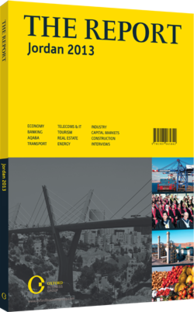A regional operation: The medical tourism segment is benefitting from an influx of Middle Eastern patients
Over the past decade, a combination of factors like high-quality care and low costs have helped attract an increasing number of patients to Jordan as medical tourists. The sector has gained more international recognition in recent years, as well. In a 2009-10 review of the global medical tourism industry, the World Bank ranked Jordan fifth best in the world and first in the Middle East. Thanks to increased arrivals from region-al medical tourists, metrics for the sector have seen major gains in the past two years. Evolving health leg-islation, meanwhile, is set to facilitate further growth.
SECTOR PERFORMANCE: Jordan has a total of 102 hos-pitals, 59 of which are private. The remainder are pub-lic, university or royal medical services hospitals. Of those 59, just over two-thirds are part of the country’s Private Hospitals Association (PHA), a non-profit trade organisation created in 1984 to represent the inter-ests of private health care providers in the country. About 240,000 tourists came to these facilities in 2011, either seeking medical treatment or accompanying patients, according to PHA data made available to The Jordan Times in October 2012. These visitor numbers have grown substantially in the past few years, up about 26% from the 190,000 medical visitors that came in 2007.
In 2011 the health association had originally project-ed that violence in neighbouring countries would depress health tourism arrivals, just as it had caused overall tourism arrivals to drop. Initial estimates were as low as 180,000 for 2012. Regional unrest had the opposite effect, however, with the number of patients from Yemen, Libya, Syria and other nearby countries rising. In the first half of 2012 alone, about 55,000 Libyans came to Jordan to seek medical care, Fawzi Hammouri, head of the PHA, said in June 2012. Although official 2012 data was not available at the time of pub-lication, the year appears to have gone well for the industry in terms of revenues.
During his presentation at the second annual Future of Medical Tourism regional conference in December 2012, Hammouri said he expected the year’s direct revenues from medical tourism to exceed $1bn, up from the $850m in 2011.
BENCHMARKS FOR PROGRESS: The government and care providers are working out legislative changes that could help push the sector forward. One recurring top-ic appears to be visa restrictions. Representatives from the PHA have called on the government to ease visa restrictions for medical tourists, since prospective patients from certain countries can wait up to a month before receiving an entry visa. Especially when imme-diate care is necessary, these patients may choose to seek care elsewhere. “Turkey is our main competitor in the region,” Hammouri told local daily The Jordan Times in July 2012. “They give visas to patients upon arrival at the airport, even if those patients are from coun-tries whose citizens usually need to wait to obtain visas.”
Obtaining and maintaining accreditation has also been an important topic in the kingdom, since medical tourists often want assurances that the quality of care that they are receiving measures up to international standards. Authorities recognise this and have made accreditation a priority, Abdul Latif Wreikat, the minis-ter of health said at the second annual Quality of Health-care Conference and Exhibition in November 2012. In 2007 the US Agency for International Development and the Jordan Healthcare Accreditation Project part-nered up to create the Healthcare Accreditation Coun-cil, a non-profit organisation that develops national standards for care and prepares care providers for international accreditation (see Health chapter).
LEGAL ISSUES: Medical accountability legislation has been on the table for some time. Parliament has pro-posed four medical accountability draft laws since 2007, none of which came into force. Organisations from the health care sector itself expressed disagreement with these laws, saying that lawmakers first needed to address existing regulatory issues before trying to pass a new accountability law. The latest draft law is being discussed by the Legislation and Opinion Bureau, accord-ing to a report by The Jordan Times in January 2013.
You have reached the limit of premium articles you can view for free.
Choose from the options below to purchase print or digital editions of our Reports. You can also purchase a website subscription giving you unlimited access to all of our Reports online for 12 months.
If you have already purchased this Report or have a website subscription, please login to continue.

